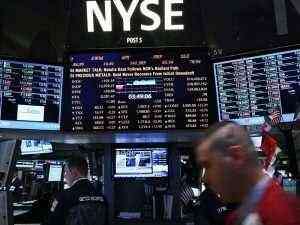
An asset’s depreciation or accumulated depreciation has the following principles for measurement and recognition in books of accounts. Depreciable assets provide economic benefits for more than one accounting period. However, the economic usefulness of these assets declines over time.

The accumulated depreciation account doesn’t go on an income statement, but it indirectly relates to this financial data synopsis. Depreciation is expensed on the income statement for the current period as a non-cash item, meaning it’s an accounting entry to reflect the current accounting period’s value of the wear and tear of the asset. Depreciation is the accounting method that captures the reduction in value, and accumulated depreciation is the total amount of the depreciated asset at a specific point in time. These changes can affect the value of your business and your taxes. Suppose a company bought $100,000 worth of computers in 1989 and never recorded any depreciation expense. Your common sense would tell you that computers that old, which wouldn’t even run modern operating software, are worth nothing remotely close to that amount.
Sum-of-the-Years’ Digits Method
The quarterly income statements will report $3,000 of depreciation expense, and the annual income statements will report $12,000 of depreciation expense. Each month $1,000 of depreciation expense is being matched to the 120 monthly income statements during which the displays are used to generate sales revenues. Accumulated depreciation is usually not listed separately on the balance sheet, where long-term assets are shown at their carrying value, net of accumulated depreciation.
- Alternatively, if the company used IFRS and elected to carry real estate on the balance sheet at fair value, the building would appear on the company’s balance sheet at its new fair value of $875,000.
- For the December balance sheet, $24,000 of accumulated depreciation is listed, since this is the cumulative amount of depreciation that has been charged against the machine over the past 24 months.
- After two years, the company realizes the remaining useful life is not three years but instead six years.
- $3,200 will be the annual depreciation expense for the life of the asset.
A company acquires a machine that costs $60,000, and which has a useful life of five years. This means that it must depreciate the machine at the rate of $1,000 per month. For the December income statement at the end of the second year, the monthly depreciation is $1,000, which appears in the depreciation expense line item.
By comparing the total amount a company has used its assets to the total value of the assets, we can determine the current value and maybe more importantly, the remaining useful value of the assets. A company buys a fixed asset for $20,000 and depreciates it on a straight-line basis on the assumption that the asset has a useful life of 20 years. After five years, a total of $5,000 of depreciation expense has been recognized, which is the balance in the accumulated depreciation account for that asset. Each year, the accumulated depreciation balance increases by $9,600, and the press’s book value decreases by the same $9,600.
Special Issues in Depreciation
So, investors should be wary of overstated life expectancies and scrap values.
Using these variables, the accountant calculates depreciation expense as the difference between the asset’s cost and its salvage value, divided by its useful life. This results in a total of $4,000 of depreciation expenses per year. The total amount depreciated each year, which is represented as a percentage, is called the depreciation rate. For example, if a company had $100,000 in total depreciation over the asset’s expected life, and the annual depreciation was $15,000. Because companies don’t have to account for them entirely in the year the assets are purchased, the immediate cost of ownership is significantly reduced. Not accounting for depreciation can greatly affect a company’s profits.
To see the specifics of depreciation charges, policies, and practices, you will probably have to delve into the annual report or 10-K. Accumulated depreciation on the balance sheet serves an important role in in reflecting the actual current value of the assets held by a business. It represents the reduction of the original acquisition value https://online-accounting.net/ of an asset as that asset loses value over time due to wear, tear, obsolescence, or any other factor. Depreciation expense is the amount that a company’s assets are depreciated for a single period (e.g,, quarter or the year). Accumulated depreciation, on the other hand, is the total amount that a company has depreciated its assets to date.
- Depreciation is often what people talk about when they refer to accounting depreciation.
- Depreciation expense is considered a non-cash expense because the recurring monthly depreciation entry does not involve a cash transaction.
- Notice that in year four, the remaining book value of $12,528 was not multiplied by 40%.
- It represents the reduction of the original acquisition value of an asset as that asset loses value over time due to wear, tear, obsolescence, or any other factor.
Assets are recorded on the balance sheet at cost, meaning that all costs to purchase the asset and to prepare the asset for operation should be included. Costs outside of the purchase price may include shipping, taxes, installation, and modifications to the asset. Following GAAP and the expense recognition principle, the depreciation expense is recognized over the asset’s estimated useful life. Depreciation is often what people talk about when they refer to accounting depreciation. This is the process of allocating an asset’s cost over the course of its useful life in order to align its expenses with revenue generation. For example, an asset with a useful life of five years would have a reciprocal value of 1/5, or 20%.
What Heading Is the Capital Lease Reported Under on a Balance Sheet?
Accumulated depreciation adds up all the periodic depreciation of a specific asset from the time it was brought into use. More appropriately, accumulated depreciation can be categorized as a contra-asset account that offsets the asset account’s balance. The periodic allocation or writing off of a depreciable asset’s cost to expense over its useful life is termed depreciation.
Hudson Global Reports 2023 Second Quarter Results – GlobeNewswire
Hudson Global Reports 2023 Second Quarter Results.
Posted: Thu, 10 Aug 2023 07:00:00 GMT [source]
Since the original cost of the asset is still shown on the balance sheet, it’s easy to see what profit or loss has been recognized from the sale of that asset. $3,200 will be the annual depreciation expense for the life of the asset. If an asset is sold or disposed of, the asset’s accumulated depreciation is removed from the balance sheet. Net book value isn’t necessarily reflective of the market value of an asset. Accumulated depreciation is a measure of the total wear on a company’s assets. In other words, it’s the total of all depreciation expenses incurred to date.
Accumulated Depreciation on a Balance Sheet
Companies can also depreciate long-term assets for both tax and accounting purposes. The term depreciation refers to an accounting method used to allocate the cost of a tangible or physical asset over its useful life. Depreciation represents how much of an asset’s value has been used. It allows companies to earn revenue from the assets they own by paying for them over a certain period of time. Depreciation on the income statement is for one period, while depreciation on the balance sheet is cumulative for all fixed assets still held by an organization. The depreciation policies of asset-intensive businesses such as airlines are extremely important.
This method of writing off an asset’s cost is known as depreciation. You won’t see “Accumulated Depreciation” on a business tax form, but depreciation itself is included, as noted above, as an expense on the business profit and loss report. You can count it as an expense to reduce the income tax your business must pay, but you didn’t have to spend any money to get this deduction. Let’s say you have a car used in your business that has a value of $25,000.
In other words, the recording of incomes and expenses should be done on a cause-and-effect basis. The matching principle of accounting explains when an expense should be realized. We will discuss the concept of accumulated depreciation, its recognition, and its measurement in the balance sheet of a business.

Watch this short video to quickly understand the main concepts covered in this guide, including what accumulated depreciation is and how depreciation expenses are calculated. Financial analysts will create a depreciation schedule when performing financial modeling to track the total depreciation over an asset’s life. Make sure to look at the balance before making this calculation to make sure that land isn’t included in the fixed asset total. Although, it is encouraged to use different depreciation methods for different assets. It is important to understand some facts about depreciation to recognize and measure accumulated depreciation.
We consider three of the most popular options, the straight-line method, the units-of-production method, and the double-declining-balance method. Accumulated depreciation is commonly used to forecast the lifetime of an item or to keep track of depreciation year-over-year. Businesses also create accounting peculiar features of single entry system in the context of bookkeeping depreciation schedules with tax benefits in mind because depreciation on assets is deductible as a business expense in accordance with IRS rules. The sum-of-the-years’ digits (SYD) method also allows for accelerated depreciation. Start by combining all the digits of the expected life of the asset.
Depreciation expense flows through to the income statement in the period it is recorded. Accumulated depreciation is presented on the balance sheet below the line for related capitalized assets. The accumulated depreciation balance increases over time, adding the amount of depreciation expense recorded in the current period.